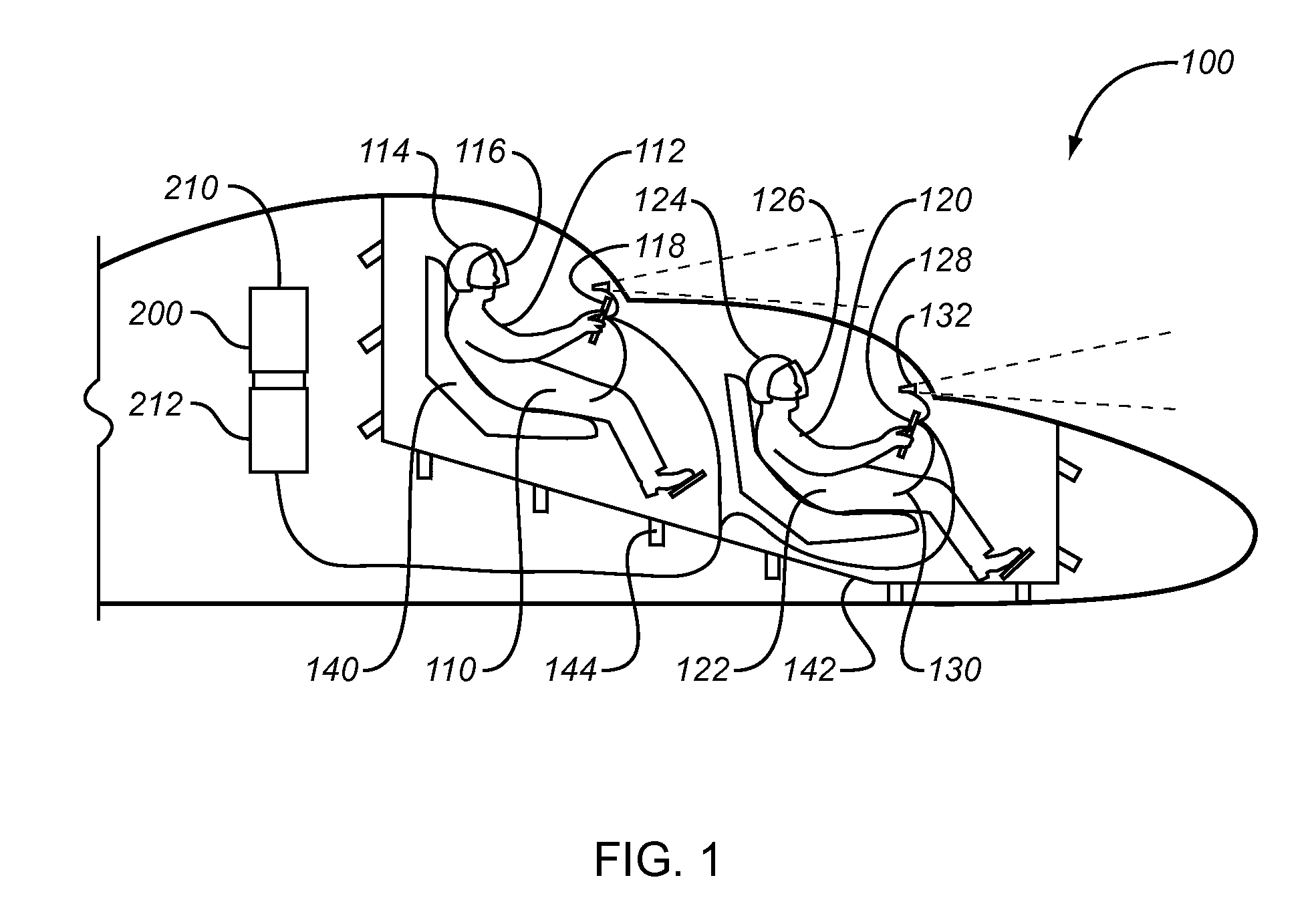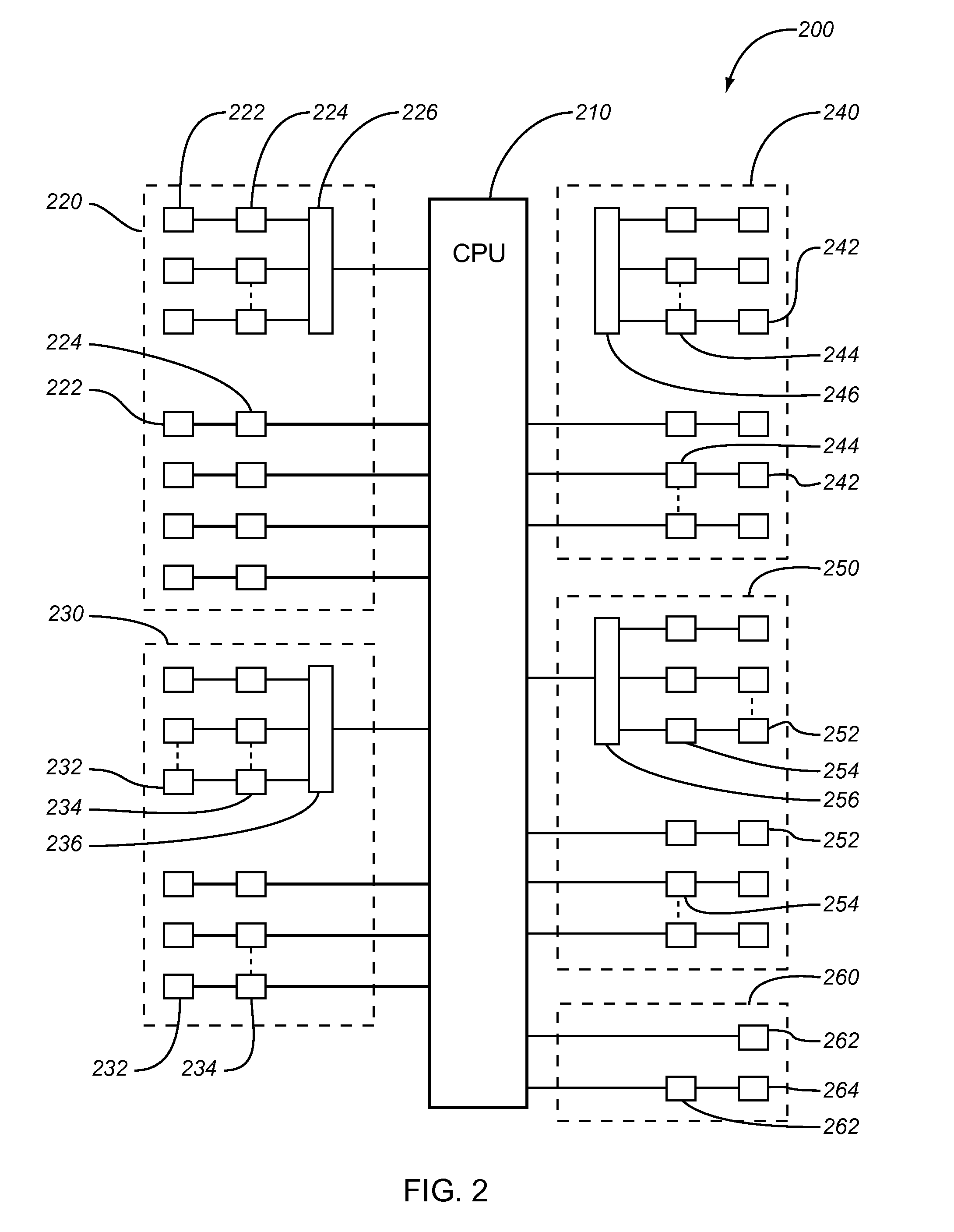System and method for measuring and minimizing the effects of vertigo, motion sickness, motion intolerance, and/or spatial disorientation
a technology of vertigo and minimizing the effects of vertigo, motion sickness, motion intolerance, and/or spatial disorientation, which is applied in the direction of diagnostic recording/measuring, instruments, navigation instruments, etc., and can solve the problems of poor ventilation, more susceptible, and more pronounced motion sickness
- Summary
- Abstract
- Description
- Claims
- Application Information
AI Technical Summary
Benefits of technology
Problems solved by technology
Method used
Image
Examples
embodiment 390
[0059]FIG. 5 illustrates yet a further embodiment 390 of an eyeglass headwear 391 implementation of the avionics subsystem. This embodiment further employs the use of eye sensors 392, 393. In one embodiment these sensor 392, 393 take the form of video cameras, which records images of the user's eyes as they move during use of the system. The video cameras are controlled by camera driver circuitry 394 and video interface circuitry 395 which interfaces with video interface circuitry 398 in the logic / power dongle 399 via umbilical electrical connection 396. The logic circuitry in the dongle 399 monitors ocular parameters like eye vertical (up and down) and horizontal (left and right), combined vertical and horizontal, and rotational eye movement and pupil dilation. This embodiment also includes inertial sensors 340 in the bridge of the headwear 391 and associated sensor circuitry 386 and interface circuitry 384 for interfacing with the logic and power dongle 399 via electrical connecti...
embodiment 400
[0060]FIG. 6 illustrates a HMD (helmet mounted display) embodiment 400 of the headwear portion of an avionics subsystem. This embodiment includes a helmet 402 with a visor 404 onto which data can be displayed in display regions 406 and 408. The helmet 402 is also configured with eye sensors 410 and 411 which track ocular parameters such as pupil size and eye movement. The inertial sensors 340 are also helmet mounted. The element connected to the other avionics systems and subsystems via an umbilical 412 that contains electrical and optical conduits (not shown) for communication. For avionics applications of the user stabilization system taught herein, the HMD embodiment of the headwear portion of the subsystem is preferable for fighter applications such as for the 5th Generation Fighters where helmets are traditionally used. The eyeglass embodiments illustrated in FIG. 3, FIG. 4 and FIG. 5 may be better suited for what is sometimes called shirt-sleeve environment applications: both ...
PUM
 Login to View More
Login to View More Abstract
Description
Claims
Application Information
 Login to View More
Login to View More - R&D
- Intellectual Property
- Life Sciences
- Materials
- Tech Scout
- Unparalleled Data Quality
- Higher Quality Content
- 60% Fewer Hallucinations
Browse by: Latest US Patents, China's latest patents, Technical Efficacy Thesaurus, Application Domain, Technology Topic, Popular Technical Reports.
© 2025 PatSnap. All rights reserved.Legal|Privacy policy|Modern Slavery Act Transparency Statement|Sitemap|About US| Contact US: help@patsnap.com



